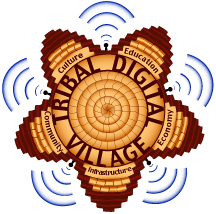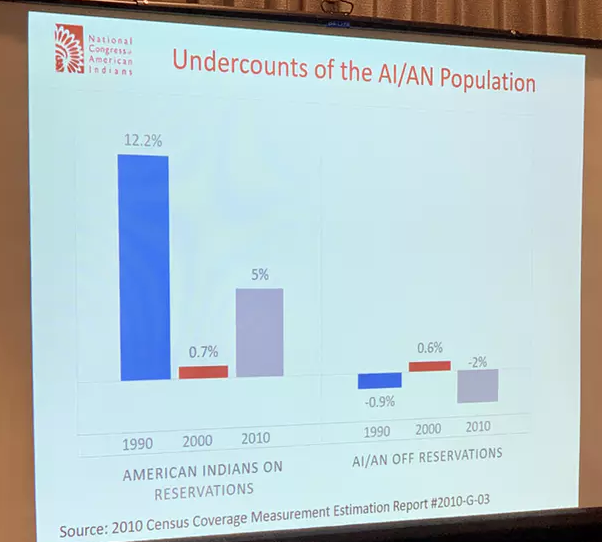How Connectivity Strengthens Communities through Education, Employment, and Health Care
Many California communities still face the harsh realities of a growing digital divide. Those with Internet gain access to rapidly expanding opportunities, while those without are being almost completely excluded. Of all California’s communities, rural Native American tribes have perhaps suffered the worst due to their remote locations and relatively small populations, two factors that discourage commercial companies from extending service onto reservations. However, several tribal communities have taken connectivity matters into their own hands.
In the greater San Diego area, the Tribal Digital Village (TDV) operates a community network that serves 17 reservations and brings with it much-needed digital resources. Matt Rantanen, the director of technology for the Southern California Tribal Chairmen’s Association, which runs TDV, recently spoke to CENIC about the impact of the TDV network. He highlighted how Internet access has bolstered education, employment, and health care, and significantly improved the overall quality of life.
Education
Before gaining Internet access, many students from rural tribal communities had to combat obstacles that their fellow classmates didn’t. “Most of our kids bus off the reservation to go to a county school,” said Rantanen, “and at county schools, teachers assume that everybody has Internet access.” For students living in remote, rural areas without the Internet, this can be a daunting obstacle. “First of all, you have to figure out what the homework is,” said Rantanen. “Second of all you, have to figure out if you need to use the Internet to do it. These kids aren’t able to compete if they don’t have adequate online resources.”
Such trials bleed over into the lives of a student’s family members, and can dramatically shift an entire family dynamic. “Say you take a family that has a single car,” Rantanen said, “and you occupy that single car for a two-hour roundtrip and however long it takes to do homework at a Starbucks or McDonald’s or wherever else you can find Internet in town. That really messes up a family’s normal life.”
Fortunately, Internet access at local tribal municipalities and after-school programs has given students the tools they need to make up classes and keep up with daily assignments. “Kids are now able to go online and take high-school equivalency classes,” Rantanen said. “So they can make up classes they’ve missed on their own after school at the resource center.”
Rantanen noted that since he first started working with TDV, the number of graduating high schoolers has exploded. “When I was first here, in 2001, 26 kids graduated from 19 reservations,” said Rantanen. “But in 2017, 127 kids graduated from those same communities. That’s not due to population growth.”
According to Rantanen, graduation is often paired with a ceremony that marks a person’s transition from childhood to adulthood. “When they get their high school GED, the leaders of their tribe actually give them an eagle feather — a real eagle feather — at a coming-of-age ceremony, which is very traditional for tribal communities,” Rantanen said. “It’s a big deal.”
Employment
Those already out of school are still benefiting immensely from new and improved Internet access, especially when it comes to employment opportunities. “When you’re applying for jobs, searching for jobs, doing training to better understand what a job is asking for — all of that requires Internet and hugely impacts your relationship to the working world,” Rantanen said.
This is especially true for tribal communities, which have struggled with high rates of unemployment. “Most of the reservations are around 55% employed,” Rantanen said. “There aren’t any local jobs.” But Internet access is bringing newfound capabilities, enabling people to leverage digital commercial platforms. “With a big influx of Internet out here, there’s space for a lot of little cottage industry stuff, while some small businesses are now growing because they have access to the Internet,” said Rantanen.
Jobs aren’t the only resources made accessible by broadband connectivity. “Everything has gone online, including the tribal governments and grant making as well,” said Rantanen. “You can’t apply for a government grant without Grants.gov, you can’t apply for state-level funding without being online, you can’t apply for scholarships without being online, can’t apply for housing information or anything like that. It all requires Internet access.” All of these services are absolutely vital and can create opportunities for even greater change.
Health Care
Even access to health care is improving. Due to the remoteness of many tribal communities, online consults between physicians and patients can save money, time, and energy. Known as telemedicine, such virtual appointments are revolutionizing the way medicine works. “If people are dealing with diabetes, heart issues, or other general health issues, they can now manage all that with a remote doctor-patient check-up,” said Rantanen. “You can do some of your own biometrics with a smartwatch and feed data back to your doctor. It really changes the dynamics of health maintenance.”
Having access to quality Internet connectivity is only growing more important as time passes. The tribal communities served by TDV have seen lasting, measurable benefits since getting hooked up to the Internet, and look forward to even greater opportunity as connectivity expands and improves. TDV is working with CENIC to increase network capacity and to link key community organizations — community anchor institutions like libraries, schools, and health clinics — to the CENIC network. It is CENIC’s goal to ensure research and education communities throughout California have access to a reliable network and the capacity they need to thrive in an increasingly digital world.





Comments are closed here.